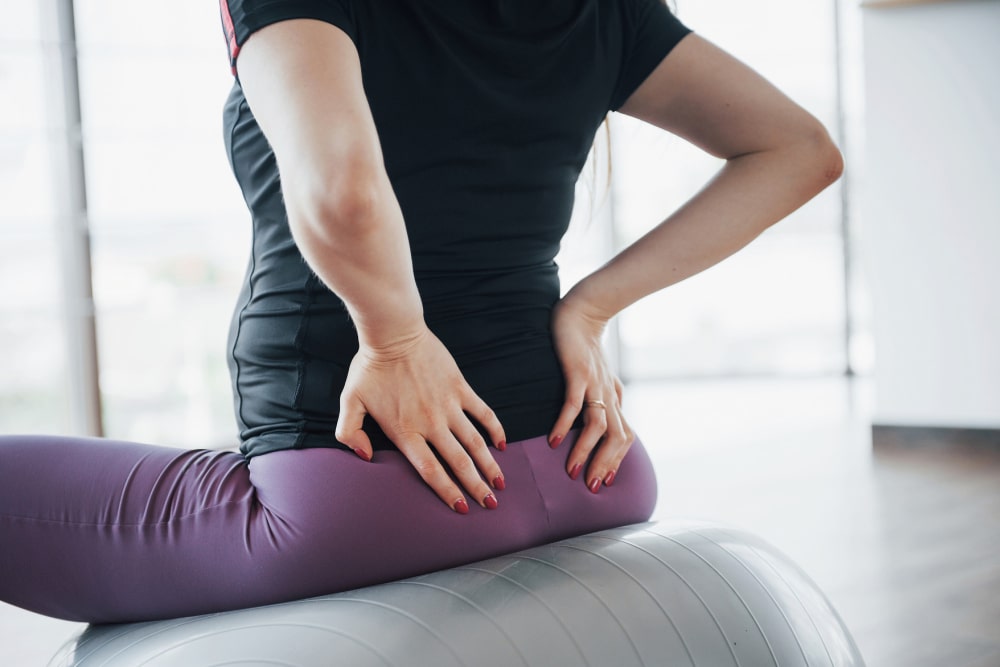One of the most common issues faced by runners is hip pain. Even in those who have trained for years and take healthy precautions, hip pain is often unavoidable due to wear and tear on the joint or surrounding tissue. That said, understanding the underlying anatomy of the hip joint, being aware of common causes of pain after running, implementing prevention strategies that can reduce your risk, and knowing the available treatment options can help you manage your hip pain. This article will explore these topics in detail, helping you gain a better understanding of how to treat and prevent hip pain after running.
Anatomy of the Hip Joint
The hip joint comprises two main parts: the acetabulum (the socket) and the femoral head (the ball). The acetabulum is a part of the pelvis, and its rim is lined with cartilage called the labrum. This cartilage helps to support the femoral head when movement occurs. Several ligaments connect the two parts, helping to provide stability and flexibility during activities like walking or running. Muscles such as the gluteus maximus, gluteus medius, and piriformis also play a role in hip movement.
Read More: Burning Pain in Shoulder: What Causes It, How to Prevent It?
Common Causes of Hip Pain After Running
The most common causes of hip pain after running are overuse injuries, muscle imbalances, tendonitis, bursitis, hip labral tears, and stress fractures.
Overuse injuries occur when the same repetitive motion is made without allowing sufficient rest and recovery, stressing the hip joint and surrounding tissue.
Muscle imbalances can cause by poor training techniques or lack of stretching, which can lead to tightness and decreased range of motion in the hips.
Tendonitis is inflammation of the tendons that connect muscles to bones, while bursitis occurs when a fluid-filled sac that cushions the joint becomes inflamed.
Hip labral tears are caused when the cartilage surrounding the hip joint is damaged, usually due to repetitive motion or trauma.
Stress fractures can also occur due to the constant pounding of the hips against the ground during running, which causes tiny cracks in the bone tissue.


What are the Symptoms of hip pain after running?
Symptoms of hip pain after running can vary depending on the cause. They may include aching in the groin area, difficulty walking or standing, stiffness in the joint, swelling, and tenderness to the touch. There may also be a popping, crunching, or snapping sensation when the joint is moved.
Read More: Back Pain After Eating: What Causes It, How to Prevent It?
Prevention Strategies for Hip Pain Relief
There are several strategies that can implement to reduce the risk of hip pain after running.
Proper warm-up and cool-down routines should always do before and after running to prepare your body for exercise and decrease muscle soreness afterward. This should involve dynamic stretching and light activity such as walking or jogging.
If increasing intensity, it should do gradually to allow your body time to build up strength and endurance.
Strengthening exercises for the hips should also incorporate into your routine, as this will help support the joint and surrounding muscles when running.
Cross-training with activities like swimming or cycling can also be beneficial in helping to reduce stress on the hip joint.
Finally, appropriate footwear should be worn when running to absorb shock and provide adequate support for the hips.
Treatment Options for Hip Pain After Running
Depending on the severity of your condition, different treatment options may recommend by your doctor.
Rest and ice can help reduce inflammation and pain associated with most hip injuries.
Physical therapy can help restore strength and flexibility in the hip joint and retrain movement patterns that may have been altered due to injury or weakness.
Non-steroidal anti-inflammatory drugs (NSAIDs) may also prescribe by your doctor for pain relief.
Corticosteroid injections into the hip can also reduce inflammation in some cases.
In severe cases, surgical intervention may be necessary to repair damaged tissue or correct any structural issues that are causing pain.
Read More: Foot Pain After Running: Causes, 7 Effective Treatments
Returning to Running Safely
When returning to running after an injury, it is important to listen to your body and gradually increase intensity as you build up strength and endurance. It is also important to use proper form when running, as this will help reduce the risk of further injury or pain.
Finally, integrating strength training and stretching into your routine can help ensure that you are adequately prepared for any activity or exercise that involves hip movement.
By following these guidelines, you can successfully manage your hip pain after running and continue to enjoy the activity you love.
Stretching and Foam Rolling
Stretching and foam rolling can help to reduce tension in the muscles around the hip joint, restore range of motion, and improve flexibility. Static stretching is a great way to target individual muscle groups and loosen them up before or after running.
Dynamic stretches like lunges are also beneficial for increasing mobility through the hips and strengthening the muscles.
Foam rolling can provide deep tissue massage to target tight areas in the hips, glutes, and hamstrings.
Regular foam rolling can help improve circulation, reduce pain and soreness, and speed up recovery after running.


Read More: Sinus Infection Ear Pain: What Causes It and How to Treat?
Nutrition for Hip Pain
Eating a healthy diet is important for overall health and wellness and also for reducing inflammation and pain in the hips. Foods that are high in omega-3 fatty acids, like salmon, can help to reduce inflammation throughout the body. Eating plenty of antioxidant-rich fruits and vegetables can also help to reduce inflammation and promote healing. Protein is important for muscle growth and repair, so include enough lean protein sources in your diet. Drinking plenty of water will also help to keep the body hydrated and reduce inflammation.
Conclusion
In conclusion, hip pain after running can cause by various factors, including overuse injuries, muscle imbalances, tendonitis, bursitis, hip labral tears, and stress fractures. It is important to listen to your body and take proactive measures such as proper warm-up and cool-down routines, strengthening exercises for the hips, cross-training with activities like swimming or biking, and wearing the appropriate footwear when running. Treatment options may include rest, ice, physical therapy, medications, and in some cases, surgery. Additionally, stretching and foam rolling, as well as being mindful of nutrition, can all be beneficial for managing hip pain after running. By taking the necessary precautions and following these tips, you can safely return to running and enjoy it once again.
Read More: Sharp Pain in Leg: What Causes It and How to Treat?
FAQs
A: The length of time it takes for hip pain to go away depends on the severity and cause of the injury. If managed proactively, most hip injuries should heal within several weeks or months. However, if left untreated, the condition may worsen, and the healing time could be longer.
A: It is usually safe to begin running again after recovering from an injury or episode of hip pain. However, when returning to running after an injury, it is important to listen to your body and gradually increase intensity as you build up strength and endurance. It is also important to use proper form when running, as this will help reduce the risk of further injury or pain.
A: Stretching and foam rolling can help to reduce tension in the muscles around the hip joint, restore range of motion, and improve flexibility. Static stretches are great for targeting individual muscle groups, while dynamic stretches like lunges increase hip mobility and strengthen the muscles. Foam rolling can provide deep tissue massage to target tight areas in the hips, glutes, and hamstrings.
A: Eating a healthy diet that includes foods high in omega-3 fatty acids, such as salmon, antioxidant-rich fruits and vegetables, and lean proteins. It can help reduce inflammation and hip pain. Additionally, drinking plenty of water will help keep the body hydrated and reduce inflammation.

